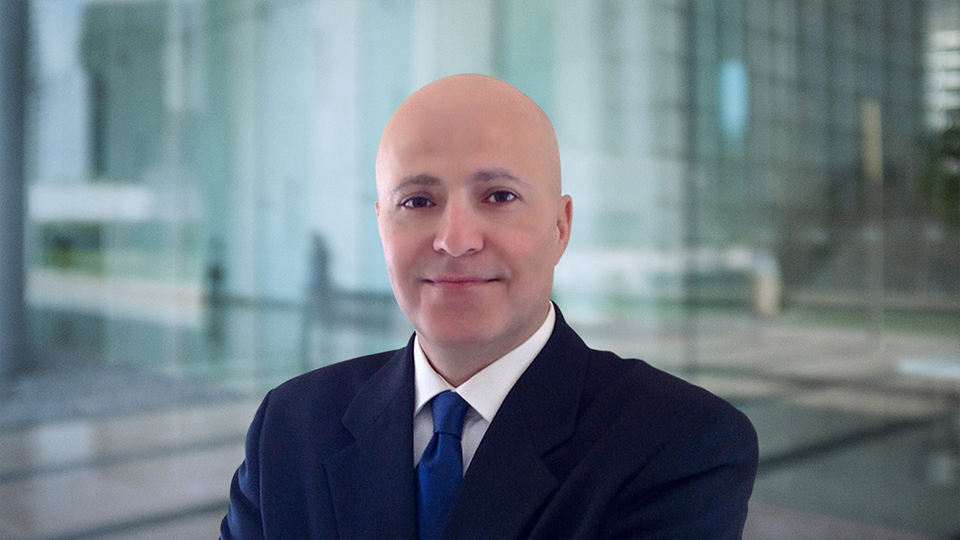
Sam Khalilieh is a national director for advanced manufacturing and mission critical facilities at Tetra Tech.
With more than 25 years of experience in architecture and engineering and manufacturing, he has managed profit and loss (P&L), operations, and business development across sectors such as nuclear, water, pharmaceutical, aerospace, retail, metals, industrial cooperation, and private equity.
Sam has led large programs and divisions in the United States, as well as China, Canada, Dubai, India, Puerto Rico, and Saudi Arabia. He is a Registered Professional Engineer and LEED AP, holding an advanced business degree from the University of Notre Dame and a Bachelor of Science in Electrical Engineering from the University of Toledo.
What are small modular reactors (SMRs)?
SMRs are a vital component of powering energy-intensive applications, from powering small grids to providing energy for industrial processes and next-generation AI data centers.
SMRs are a class of nuclear reactors characterized by their reduced size, modular design, CO2-free emissions, intrinsically safe and ultra-reliable energy source. SMRs can generate up to 300 megawatts (MW) of electricity, while micro modular reactors (MMRs) are smaller and can produce 1-20 MW of thermal energy used directly as heat or converted into electrical power. Unlike their larger counterparts, SMRs and MMRs can be built in factories and assembled on-site, offering significant advantages in terms of construction time, safety, and cost-effectiveness.
What are the drivers fueling SMR energy growth?
We’re seeing an increased demand for reliable power and energy solutions to accommodate industrial processes, data centers, district heating, and desalination applications. SMRs are flexible in deployment, offer reduced construction times, and have lower financial risk, making them an ideal option for providing reliable, continuous energy where needed. Increased demand for data center energy requirements, which concentrate the need for energy exceeding locally available supplies, are one of the emerging drivers for the application of SMRs. SMRs provide a consistent, scalable, and zero operational carbon emissions power source that aligns with the high reliability and operational demands of AI data centers and other applications.
Many markets like the United States, United Kingdom, Canada, and parts of the European Union are now adopting regulatory frameworks to support SMR development. As more designs receive regulatory approval and more demonstration projects are deployed, SMRs are expected to become a significant player in the global energy landscape, contributing to low-carbon energy generation decarbonization.
How do SMRs differ from traditional nuclear reactors?
SMRs differ from traditional nuclear reactors in several ways: better efficiency, less waste, better siting options, scalability, and improved safety.
SMRs are engineered for higher fuel efficiency and lower waste production, often integrating fuel directly into the reactor vessel for simplified disposition. They also are significantly smaller than traditional reactors, which allows for more siting options, including underground and remote locations.
Due to their modular nature, multiple SMRs can be connected to provide as much power as needed to service remote communities, large industrial sites, data centers, and cities. These modules can be integrated with renewable microgrids to further enhance sustainability
SMRs are safer and less vulnerable to external threats and natural disasters than traditional nuclear reactors. Many SMRs incorporate passive safety systems that rely on natural physical principles such as convection, circulation, and gravity to cool the reactor core, even during a power outage or mechanical failure. These systems function without the need for active controls or human intervention, enhancing overall safety.
How is Tetra Tech able to support the transition to SMR energy?
Tetra Tech offers comprehensive engineering, design, and infrastructure solutions to support the successful deployment of SMRs. We conduct site evaluations and feasibility studies, assessing geological, environmental, and logistical factors to determine the most suitable locations for SMR installations. Additionally, we assist in electrical system planning, microgrid integration, and interconnection with existing energy infrastructure to ensure seamless and efficient power distribution. Tetra Tech provides Balance of Plant (BOP) engineering services for safe and reliable SMR operations.
We ensure compliance with environmental and regulatory requirements and help navigate the complex permitting process and facilitate public outreach programs and community education initiatives to foster transparency and build trust among stakeholders.
Tetra Tech supports secure, microgrid-enabled SMR solutions to assist clients in transitioning toward clean, decentralized power generation while providing resilient energy infrastructure to support critical facilities, emergency response operations, and islanded energy grids.
What are your expectations for growth in SMR use over the next few years?
The deployment of SMRs is expected to accelerate significantly over the next decade, driven by rising energy demand, decarbonization policies, and advancements in nuclear technology. By 2035, SMRs are expected to be crucial in replacing fossil fuels, stabilizing renewable grids, and expanding nuclear energy access.
In the AI data center sector, there is an increasing demand for reliable power that currently exceeds the available supply. We look forward to expanding our services to support infrastructure, buildings, and systems associated with these projects as this emerging market and technology develops.